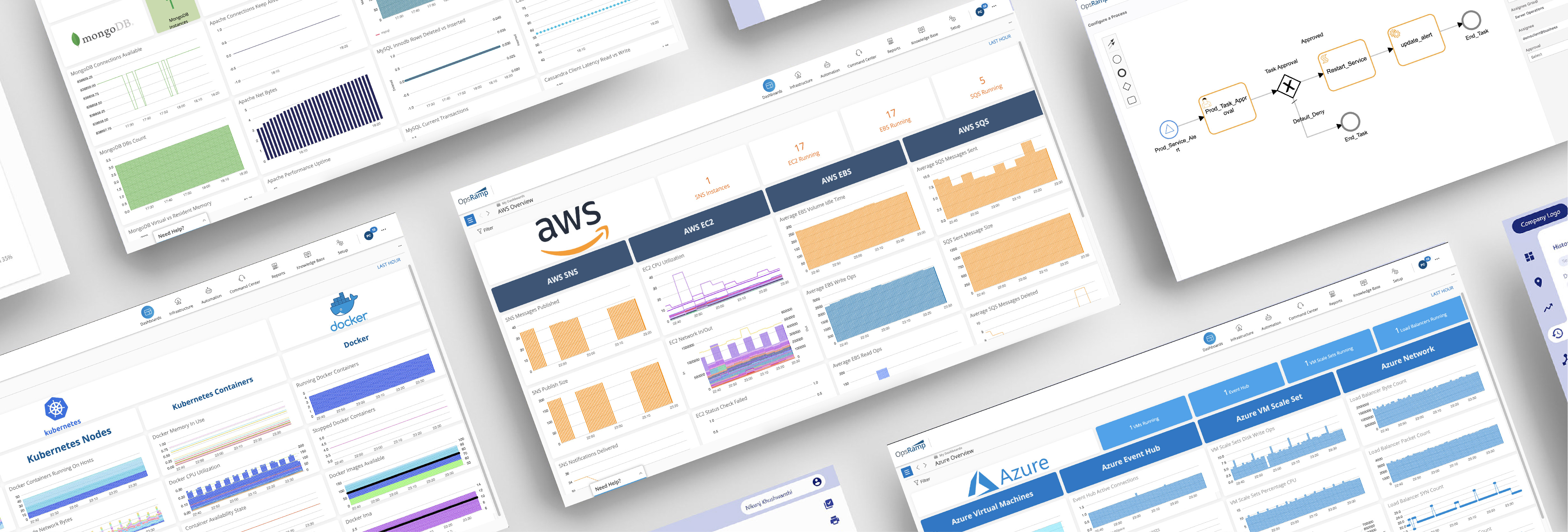Onboard, monitor, and optimize your cloud and cloud-native infrastructure within 30 minutes or less.
Are you one of those amazing IT operations professionals who worked hard to migrate enterprise workloads to the public cloud during the pandemic? Your team then probably built hundreds of tags for different types of cloud resources for the right levels of visibility and governance across cost optimization, chargeback, and reporting.
But, before you can declare 'Mission Accomplished', you now need to deploy monitors, alerts, and dashboards for tracking the health and performance of your cloud services. Given that monitoring configurations can involve back-breaking work, do you wish for a modern approach that delivers faster value from your monitoring investments?
Look no further. The OpsRamp Fall 2020 Release provides new capabilities across Discovery & Monitoring and Remediation & Automation so that IT teams can deliver awesome user experiences and ensure stellar performance and uptime.
- Discovery and Monitoring. As enterprises increase adoption of public cloud infrastructure, monitoring IT services built on cloud services remains complicated. OpsRamp's latest capabilities for discovering and monitoring cloud resources helps in the following ways:
- Transformed User Experience with Hybrid Cloud Onboarding Guide. The new onboarding guide is a fully managed wizard where users can quickly onboard cloud monitoring tools, integrations, and agents. You can discover and monitor cloud infrastructure in no time without having to assign or clone different monitoring templates. The onboarding guide ensures a streamlined discovery-to-first-metric process along with robust visualizations in a few simple steps.
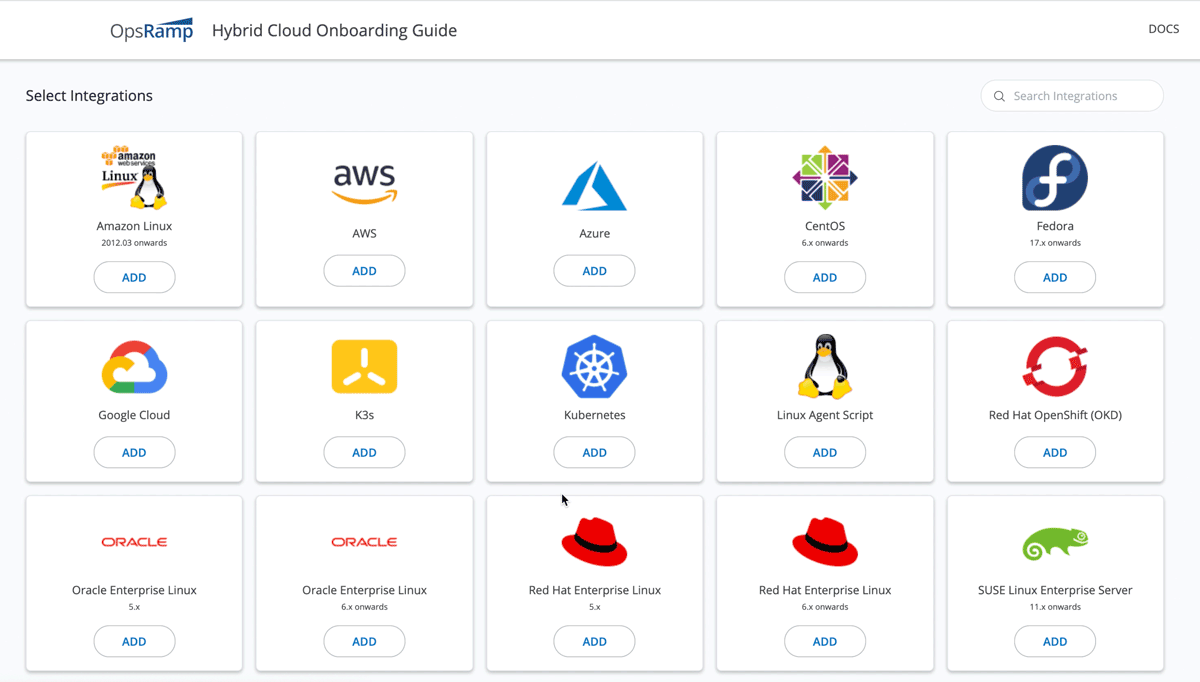
Maximize value received from OpsRamp with a simpler onboarding process - Curated Dashboards. Once users complete the onboarding process, they can immediately access curated dashboards for popular cloud services and applications. IT teams can use the new dashboarding model to support any metric captured by OpsRamp. Each tile in the dashboard starts with a query building process powered by the Prometheus Query Language (PromQL).
Power users can build custom dashboards using PromQL queries to deliver performance insights for both IT executives and business units. Dashboards currently support time series, single value, image, and text data along with greater cardinality and dimensionality for granular metric insights.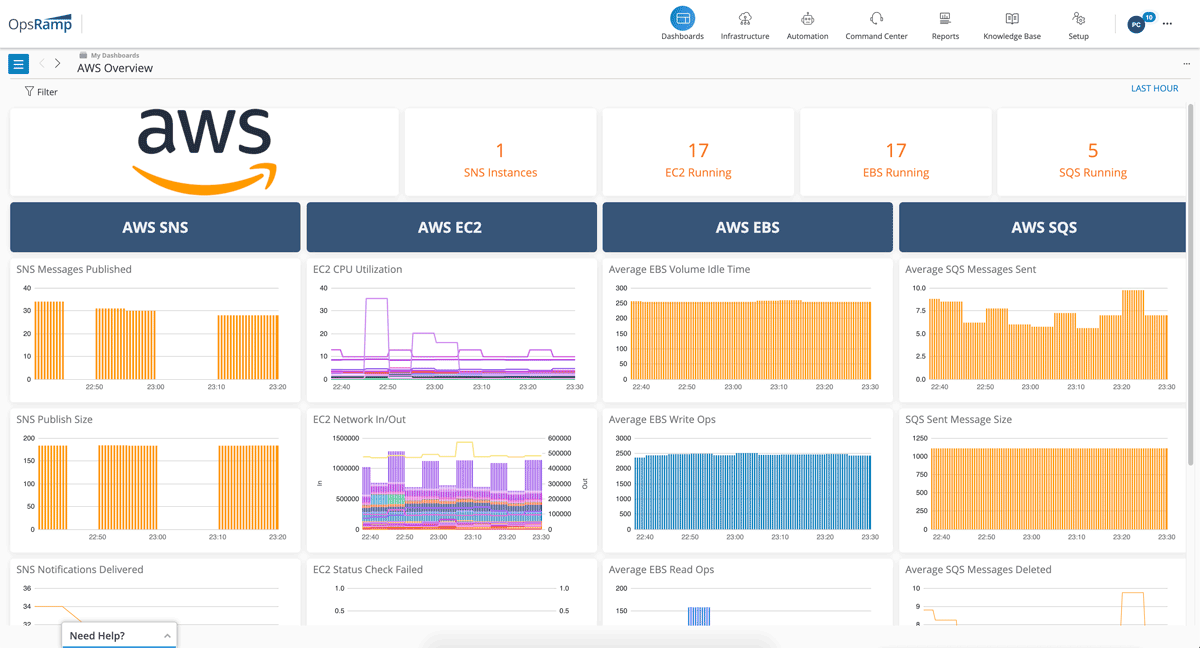 Save time creating and configuring dashboards for popular cloud services
Save time creating and configuring dashboards for popular cloud services - Container and Cloud Monitoring. OpsRamp now supports the discovery and monitoring of applications running in containerized infrastructure. IT teams can auto-detect, build service-level objectives, and troubleshoot issues for 25 different applications such as Cassandra, Kafka, MongoDB, and MySQL deployed in cloud native workloads.
New public cloud and container services supported in this release include Amazon ECS, Azure Functions, Azure Hyperscale (PostgreSQL), Azure Managed SQL, OpenShift, K3s, and Containerd.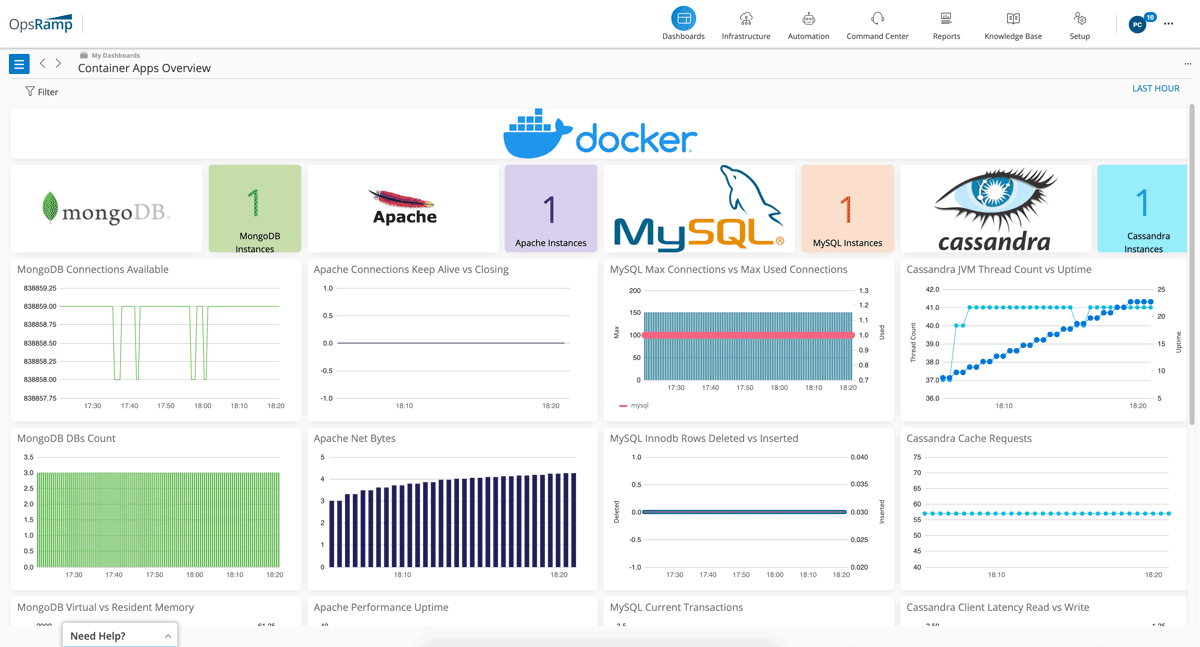 Gain deeper visibility into the performance of cloud and cloud native services
Gain deeper visibility into the performance of cloud and cloud native services
- Transformed User Experience with Hybrid Cloud Onboarding Guide. The new onboarding guide is a fully managed wizard where users can quickly onboard cloud monitoring tools, integrations, and agents. You can discover and monitor cloud infrastructure in no time without having to assign or clone different monitoring templates. The onboarding guide ensures a streamlined discovery-to-first-metric process along with robust visualizations in a few simple steps.
- Automation and Remediation. OpsRamp's Remediation and Automation capabilities help you deliver highly reliable infrastructure while keeping firefighting at bay. This helps save time and improve governance for IT incident management.
- Human Interaction for Automated Workflows. Automation workflows can range from unattended processes to supervised interactions. You can design some workflows to require human involvement, such as requesting signoff from a manager before remediating an issue.
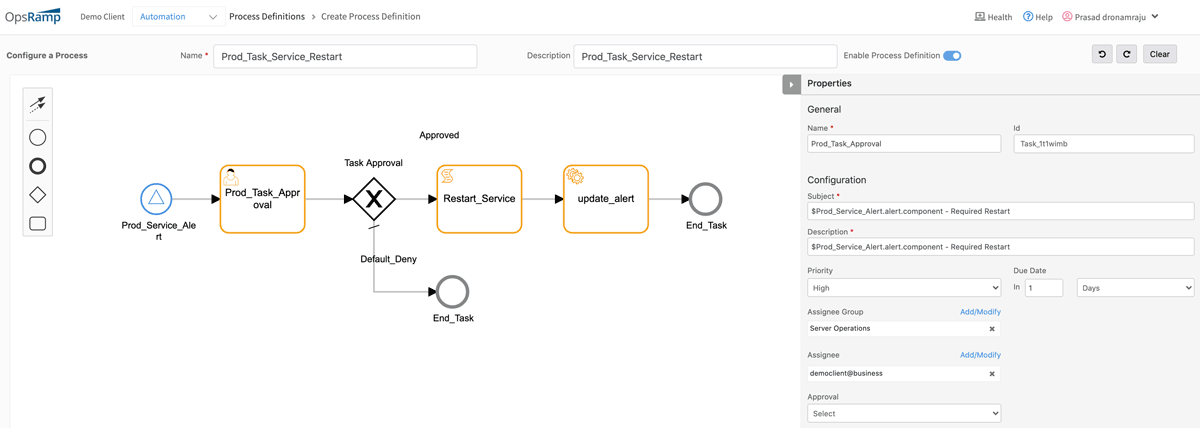
Ensure the right actions get taken at the right time to resolve an issue - Workflow Monitoring. IT operations teams can proactively monitor and troubleshoot workflow-related issues that arise during production. Users can also use workflow monitoring for auditing and compliance purposes, as a record of what took place, when and by whom.
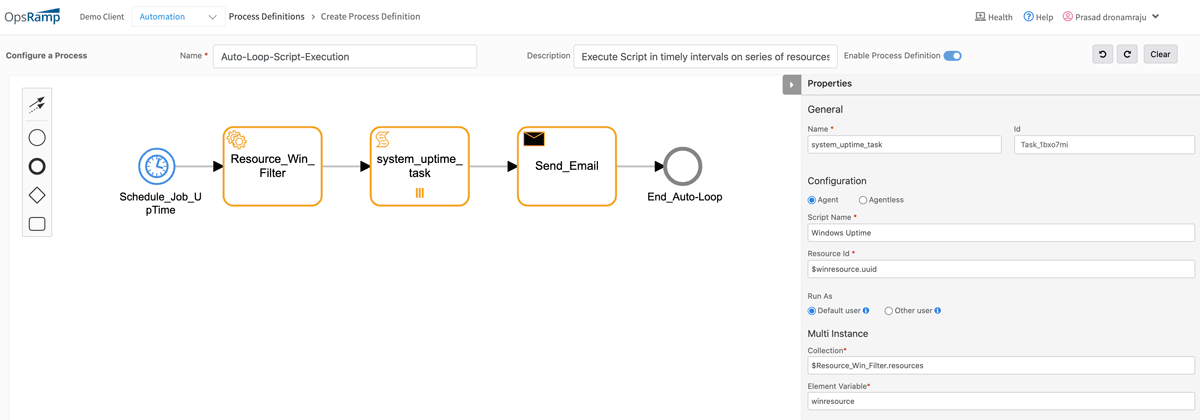
Monitor user-defined workflows and associated tasks with workflow monitoring
- Human Interaction for Automated Workflows. Automation workflows can range from unattended processes to supervised interactions. You can design some workflows to require human involvement, such as requesting signoff from a manager before remediating an issue.
And if that’s not enough, here is a quick peek into the OpsRamp Fall 2020 Release. Be sure to also watch this on-demand webinar to see what’s new in action.
Next Steps:
- Check out our What’s New page for highlights of the Fall 2020 Release.
- Learn more about the OpsRamp platform for modern ITOM.
- Schedule a custom demo with an OpsRamp solution expert.
